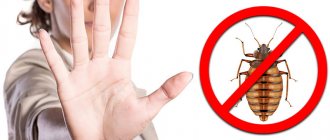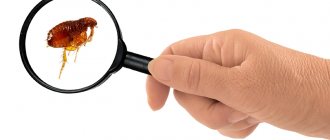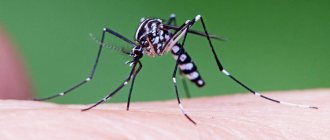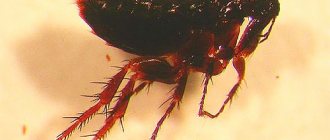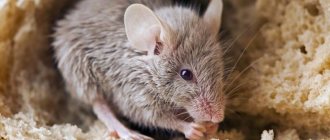Why are many people afraid of rats? What could be so scary about a small, inconspicuous animal that, when it meets a person, the first thing it does is try to run away? People are not afraid, for example, of moles or hedgehogs. Why do many people feel almost panicked when they see a rat?
In fact, this fear is well founded: rats are truly dangerous to humans, and many of the risks posed by these animals pose a real threat to life.
Firstly, rats are carriers of many diseases. Including those that in the past caused large-scale epidemics and even pandemics, and even today continue to claim thousands of human lives around the world. It’s no wonder that over the centuries-long history of acquaintance with these pests, people have managed to develop an almost instinctive fear of rats.
So today, an ordinary mother begins to panic when she sees a red rash on her child’s body, because in the past, for many generations, such rashes were a sign of deadly smallpox. And even though today this rash in most cases turns out to be a symptom of harmless diseases, the fear of it seems to be in the mother’s blood. Likewise, an ordinary city dweller, even not always knowing why rats are dangerous, is afraid of their presence. Still, the history of many generations of his ancestors eloquently testifies that where there are many of these animals, there is a threat to life.
Secondly, rats can attack humans. Yes, these are not large, man-eating predatory animals, they cannot be compared with sharks or tigers, but every year hundreds of thousands of cases of rat bites are officially registered in the world. Moreover, the bites are not harmless, but can lead to infection or leave psychological trauma.
Thirdly, encounters with rats are dangerous to health, even if these animals do not infect humans with anything. Today, musophobia - the fear of rats - is widespread; many people suffer from allergies to rat hair or excrement.
On a note
Rats, through their activities, can cause man-made accidents. Little attention is usually paid to this risk, but in vain. Remember the accident in Fukushima in Japan in the spring of 2016? It almost became a disaster comparable to the events in 2011! It is believed that the culprit was a rat that chewed through the wires in one of the switchboards. Due to a short circuit, a fire broke out and the entire cooling system of the station automatically stopped working, which almost led to the destruction of the reactor and a radiation leak. And the number of smaller accidents caused by rats and leaving, for example, maternity hospitals and hospitals without electricity, around the world is enormous.
And yet, today many of the dangers posed by rats are greatly exaggerated. People love to scare themselves and each other, and to do this they actively spread unverified rumors. As a result, some fears of these rodents are, if not illusory, then certainly not fully justified (for example, rumors of giant mutant rats in sewers, supposedly gnawing people to death).
We will not spread such rumors, but will consider precisely those risks of being in the neighborhood with rats that are documented and which should be taken seriously.
What diseases do rats carry?
To date, it has been proven that rats are carriers of more than 20 viruses, bacteria and protozoa that cause diseases in humans.
The most significant of them are:
- Plague - rats do not get it, but they carry its pathogen and are a natural reservoir for the plague bacillus. The plague bacillus itself is transferred from them to humans by fleas, which bite first rodents and then people;
- Endemic typhus, also called flea or rat typhus. Its main difference from other forms of typhus is precisely that its carriers, along with rats, are fleas (most other forms are carried by lice and ticks);
- Tetanus is a deadly disease that can develop after bites from almost any animal, and rats are no exception;
- Leptospirosis, also known as "rat disease". It is usually transmitted through contact or nutrition: it can be infected through food spoiled by rats (mainly through liquid dishes, milk and meat), water, as well as through direct contact with the animal (for example, when removing its body from a trap);
- Sodoku is a specific disease, sometimes also called rat disease. It is transmitted by rodent bites, and can also be contracted by cats or dogs that eat sick rats. After this, by the way, a cat or dog bite is also fraught with infection;
- Q fever - transmission of its pathogen occurs by inhalation, through inhalation of dust from the excrement of sick rats, or through spoiled food;
- Pseudotuberculosis, which is transmitted to humans through the nutritional route (mainly through products contaminated with rat excrement);
- Visceral leishmaniasis, or black fever, is the most severe form of leishmaniasis, which kills up to 50 thousand people annually in tropical regions. The causative agent is transferred from rats to humans by different types of mosquitoes;
- Cryptospiridiosis, which spreads through nutrition and is deadly for patients with immunodeficiencies;
- Toxoplasmosis is a relatively mild disease that poses a threat mainly to the fetus of an affected pregnant woman. It is most often transmitted through the nutritional route, through feces with which rats contaminate food;
- Creeping erythema, or erysipeloid, is a bacterial skin lesion. Most often it occurs among housewives when working with products contaminated with rat feces.
In addition, diseases carried by rats may be specific to different regions. Thus, in the USA, rats carry diseases such as Colorado tick fever and arenavirus fever, in South America - Chapare and Venezuelan hemorrhagic fevers, in Africa - Lassa fever (with a mortality rate of about 30%), in Siberia - Omsk hemorrhagic fever.
Also in Russia, rats settling on agricultural lands near human habitation become carriers and an important reservoir for the causative agent of Lyme disease. Partly from this source, ticks “feed”, which infect people with Lyme borreliosis.
It should be borne in mind that you can get many infections from rats, even if you don’t see, touch, or even know that they live nearby. A rat can scurry around unnoticed in a house or cellar, climb onto food at night, feed on it and stain it with its excrement. All you have to do is not prepare such products diligently enough, and bacteria from them will end up in the human digestive tract.
And fleas, swarming in the fur of rats, constantly scatter their eggs around the animals, and they themselves often leave the rodent’s body to find temporary shelter. If a rat gets into the living room for a while, there is a high probability that several parasites from its fur will remain there. And after a few days, when they get hungry, they will begin to bite people, possibly rewarding them with various pathogenic microbes.
This is exactly how, by the way, rats with fleas several centuries ago exterminated a third of the population of Europe...
What to do to avoid getting infected?
Unfortunately, there is no specific prevention for this case, but there are several important rules that, if followed, will help avoid contracting infectious diseases:
- Extermination of rats in residential buildings, country houses and outbuildings. This is especially true in endemic areas.
- Do not work on agricultural sites without respirators and special clothing.
- Warehouses, barns and other facilities where grain and food are stored must be reliably protected from rodents.
- Do not touch rodents, their secretions, or corpses.
- When arranging household plots, sanatoriums and other establishments where people live or rest, remove latrines and garbage pits from housing, destroy thickets of weeds and bushes.
- Regularly carry out measures to exterminate rodents in production premises.
- Do not forget about personal hygiene - wash your hands often while resting or working in rural areas.
- When going outdoors, do not use water from bodies of water, especially stagnant ones, not only for drinking, but also for washing dishes and hands.
Attention! Rats are not the best neighbors for humans, so every effort must be made to get rid of their presence not only in the house and garden, but also nearby.
Rat plague: in the Middle Ages, last century and today
According to historians, the bubonic plague pandemic, which swept across the civilized world in the 6th century AD, killed more than 100 million people. Some experts believe that this outbreak was one of the reasons for the fall of the Roman Empire.
In the 14th century (before 1325), during the second pandemic in Europe, more than 25 million people died from the plague - more than a third of its population, and the echoes of this outbreak swept across Russia, the Middle East and North Africa for several more decades, killing hundreds in different countries. thousand lives. And rats also played a decisive role here.
In the 18th century, during the reign of Empress Catherine the Great, more than 56 thousand people died from the plague in Moscow alone - it was because of the disease that the famous “plague” riot broke out.
In the 19th century, a plague pandemic broke out in Asia, spreading from China. Its echoes swept across all continents. More than 10 million people died then (about 6 million of them in India).
It is also useful to read: Interesting facts about gray rats (pasyuki)
Finally, in 1910-1911, an outbreak of plague in Manchuria killed more than 60 thousand people.
Today, about 2,500 cases of plague are reported annually worldwide. Approximately 6-7% of them end in the death of patients.
As we can see, the plague is one of the most terrible diseases in the history of human civilization. And it was rats who introduced people to this infection.
On a note
It is worth noting that the plague bacillus develops normally in the bodies of many rodents. Today, its main reservoirs in nature are wild settlements of ground squirrels, gerbils and jerboas, and rats are infected with it to a much lesser extent than these animals. However, for humans, rats are the most dangerous because they live next to them and often become a source of infection.
The causative agent of the disease is transmitted from rats to humans by fleas, mainly rat fleas, less often - cat, dog, and human fleas. All of them can change hosts and bite alternately rats and people, but the bite of a rat flea is the most dangerous, since rats are the main hosts of this species. If different fleas parasitize one animal, then due to the peculiarities of biology, it is the rat fleas that quickly displace all competitors.
Actually, the transfer of a plague stick from a rat to a person occurs like this:
- The flea sucks the rat's blood containing the pathogen;
- Bacteria accumulate in the insect's crop without penetrating the stomach, multiply in huge quantities and clog the esophagus;
- With the next bite, the flea cannot swallow a portion of blood and regurgitates a lump of mucus with plague bacilli into the wound. This is how a person or animal becomes infected.
Due to problems with ingesting blood, the infected flea is constantly hungry and often changes hosts. Therefore, the likelihood that she will try to feed on a person increases.
On a note
Despite the fact that mice are also a reservoir of plague, infection with this disease from them occurs extremely rarely, since fleas that parasitize mice practically do not attack humans. This means that in terms of infection with plague, rats are much more dangerous than mice.
In Russia, only one case of plague has been reported in recent years: in 2016, a ten-year-old boy fell ill in Altai. The disease is mainly found today in the countries of tropical Africa and South America; marmot hunters in Kazakhstan, Central Asia and Mongolia are rarely but regularly infected with it. The risk of a disease outbreak is highest where rats live in and around human housing and come into contact with wild vectors.
Rats. Who are these toothy pests?
Rats are a species of rodent that inhabits the entire world. And there is no place where these tailed creatures are not found: they are amazingly adaptable and omnivorous, which helps them survive in absolutely any conditions. Interestingly, their habitat previously did not cover the islands and continents of America. And they got there only at a time when brave sailors, with a desire to discover new lands, accidentally brought rats with them on ships.
In total, there are about 137 species of rats, as well as 567 of their subspecies and races. In Russia you can find only three of them: the Turkestan, gray and black rat.
These pests go hunting mainly at night, therefore, they can rarely be seen and that is why it may mistakenly seem that they are not in the house at all. They simply reproduce at a tremendous speed: each female can give birth to up to 15 cubs every 3-4 months, despite the fact that the offspring reach puberty after 1.5 months.
These animals are well adapted to living in cities and are practically omnivores. Food includes grain, fruits, waste from the human table and various plants. But they will not refuse to feast on animal protein: attacks on small birds and amphibians are not uncommon.
There are also cases when these animals ate each other. Such a diet makes you wonder if a rat could attack a person to try what it tastes like?
Rat endemic typhus
Other names for this disease are typhus and flea typhus. Its symptoms are fever, headache, persistent temperature within 39-40°C, severe malaise and characteristic skin rashes.
In severe cases, the pathological process of typhus involves the meninges, which leads to certain nervous disorders. In addition, the disease is dangerous due to complications in the blood vessels, which can cause myocarditis, thrombophlebitis and cerebral hemorrhages.
However, today endemic rat typhus is successfully treated with accessible and inexpensive antibiotics, and its complications are prevented with the help of blood anticoagulants. Deaths are rare and occur mainly in developing countries.
It is important that fleas are the carriers of rat typhus. Neither ticks nor lice can carry this disease. The mechanism of transmission of its pathogen is not the same as in the plague: rickettsiae do not penetrate the human blood through the saliva of a flea, but are simply found in its excrement. A person infects himself when he scratches the bite, simultaneously crushing the flea secretions remaining on the skin. The bacteria themselves penetrate into microscratches on the skin, and from them into the blood, with which they spread throughout the body.
What is the danger of rats to humans?
If there is a rat or a small group of these animals in the house, then it can soon increase significantly. Rodents can damage food supplies, growing crops and orchards by eating succulent plant stems and tree bark.
In addition, these pests are carriers of a large number of infectious diseases, namely:
- Leptospirosis;
- Typhus;
- Brucellosis;
- Pseudotuberculosis;
- Various types of fevers.
Pasyuki are carriers of eggs of ticks, fleas and helminths, which can infect pets, livestock, poultry and humans. In addition, these mammals are very aggressive and can attack living creatures that are significantly larger than the size of the rodent.
Sodoku: How dangerous is this disease?
Sodoku is a typical rat disease. Rodents themselves get sick from it and die from it, and they can infect humans through bites, since the causative agent of the infection is in the saliva and gets into the wound with it when biting the skin.
Symptoms of sodoku in humans: severe pain at the site of the bite, sometimes with suppuration or swelling; A few days after the bite, the temperature rises and muscle pain appears. The victim may also develop temporary mental disorders - impaired coordination of movements, severe agitation.
This rat disease is easily treated; its causative agent is sensitive to penicillin antibiotics, as well as salvarsan and other drugs for syphilis. At the same time, in the absence of treatment, the mortality rate of the disease reaches 10%, and therefore, even at the first suspicious symptoms, it is necessary to consult a doctor as soon as possible.
Why rats are dangerous: ways of transmitting diseases from rats
Rodent infections can be transmitted in the following ways:
- Through food. Apples, carrots, and other vegetables and fruits can become infected after contact with rodents.
- Through a bite. Rats are quite aggressive, so if they sense danger, they can attack.
- By plane. Doctors do not recommend getting too close, even with decorative mice, and keeping their cages away from the kitchen.
- With fleas. Disease carriers are not only rodents themselves, but also the insects that inhabit them.
Leptospirosis, or another rat disease
Today, WHO considers leptospirosis among the most important diseases that humans contract from animals. In particular, in Russia, back in the last century, leptospirosis was the most common disease transmitted from animals to humans. Its main feature is that the pathogens - Leptospira - are excreted from the body of rats in the urine (a fairly rare occurrence), and the likelihood of infection remains until the urine itself dries (Leptospira survives only in conditions of high humidity).
Leptospirosis is also transmitted through feces; it can be contracted from rats and mice (and in some areas mice are the main spreaders of this infection), as well as from various farm animals. In cities, this is a typical rat infection. You cannot become infected with leptospirosis directly from a sick person.
The main symptoms of the disease are fever, rash on the body, jaundice and hemorrhages in the conjunctiva of the eye. Leptospirosis can affect the heart, brain, and kidneys. The basis of treatment is antibiotic therapy (penicillins and macrolides are effective for the disease); in severe cases, plasmapheresis and the administration of specific serum to the patient are prescribed.
According to medical statistics, in approximately half of cases, leptospirosis is so severe that the patient has to be admitted to intensive care.
Fevers carried by rats and their diversity
Rats are also carriers of infections that cause various fevers in humans. These include Congo fever, Venezuelan fever, Chapare fever, Omsk hemorrhagic fever, Lassa disease and Q fever.
Interestingly, many of them are caused by viruses, and only a few (in particular, Q fever) are caused by bacteria. With the same Omsk fever, the virus is transmitted from rats in different ways:
- Carried by infected ticks;
- Spreads with dust from dry rat excrement;
- It gets into the water in open reservoirs, and a person becomes infected when drinking it.
Q fever deserves a separate discussion. Its causative agent is very stable in the environment; it is transmitted from mice and rats through excrement, water and fur; it is also carried by some ticks. Since the symptoms of this disease are very similar to a typical acute respiratory infection, it is sometimes mistaken for the flu. So, in 2009 in Holland, Q fever was mistakenly called goat flu (sometimes in everyday speech it is called “rat flu”).
It is gray rats in cities that are the main reservoirs of the causative agent of this disease.
On a note
Fevers can be contracted through direct contact with a sick or dead animal. If, for example, a child picks up a dead rat and plays with it, there is a risk of contracting an infection that will cause a fever. This distinguishes fevers from other diseases, the pathogens of which must enter the human digestive tract or directly into the blood to become infected.
The most dangerous fever transmitted from rats is Lassa fever. It is known mainly in Central Africa, where up to 5,000 people die from it every year. The main mode of transmission of this disease is through contact; most people become infected by pulling rats from traps in fields and farms. The picture below shows a poster advising that a child can become infected with a disease by handling and playing with a dead rat:
It is also useful to read: The largest rats in the world: photographs of huge representatives
What do gray and black rats look like?
The gray rat is a densely built animal with a wide and blunt muzzle. The tail is shorter than the body, covered with sparse hair. The color of the animals' fur is very variable, mostly the top is dark brown or dark gray with a reddish tint, the color of the sides gradually turns into a dirty gray underbody. Body weight from 150 to 350 grams.
Black rat - the body of the rat is slender, smaller in size than the gray one. The muzzle is narrow and elongated. The tail is longer than the body than that of the Pasyuk and is densely covered with hair. Body weight from 125 to 205 grams.
Can rats carry rabies?
To date, there are no known cases of rabies in rats. Hypothetically, rat rabies can exist; there are even theories according to which infected rodents die very quickly from this disease (within a few days), and therefore do not fall into the hands of scientists and do not have time to infect humans.
But the fact remains: rabies has never been discovered in rats and mice. Isolated cases of suspected human infection with this disease after rat bites have been documented in Poland, Israel, Thailand and Suriname, but their small number does not allow us to talk about any kind of systematicity.
It is important not to confuse rabies and tetanus. Sometimes these names are considered synonymous, especially since tetanus can also develop after animal bites. However, the mechanism of development of tetanus itself is unique: its causative agent is present in the body of most animals and people, without causing harm to the owner. It becomes pathogenic only in the absence of oxygen. In particular, in bite sites under the skin, covered with dried blood, bacteria begin to produce tetanus toxin - one of the most powerful toxins in nature - which leads to the development of the disease. That is, rats cannot tolerate tetanus, but this disease can develop after their bites.
How to get rid of rats
Rats are very fertile and thanks to this they are able to quickly capture new territories. At the same time, rodents have a sharp mind and can develop immunity to some poisons. Getting rid of them is not easy, but it is quite possible.
What products do you use against rats?
FolkChemistry and poisons
Chemicals
The best effect in the fight against rodents can be achieved using rat poison. The range of poison-containing drugs for these purposes is quite wide.
Among them there are substances that have an immediate effect and drugs that must accumulate in the body to achieve the desired result.
The first group of drugs causes problems with blood clotting, bleeding and instant death in the animal. The second group leads to kidney or liver failure, which eventually also leads to the death of the rodent.
Rats in the sewer: problems of modern cities.
Mechanical methods of rodent control
Mechanical methods include all kinds of traps and ultrasonic repellers. Among the traps, it is worth highlighting traps, rat traps and live traps.
Traps and rat traps are most often classified as killing devices. They are quite effective and easy to use.
Live traps are more expensive devices and after a rodent is caught, the question arises of how to safely remove it from the trap and what to do with it next.
The operating principle of ultrasonic repellers is based on the emission of high-frequency sound, which irritates the ears of rodents and forces them to move as far as possible from its source.
Folk recipes
There are a lot of traditional methods of controlling rodents. The most effective among them are:
- Spilling of ash . Animals cannot tolerate ash, as it causes irritation on their skin and discomfort when it gets into their stomach.
- Repellents . Rats don't like strong smells. Rolling cotton balls and dipping them in strong-smelling essential oil can help repel rats. The smells that irritate rodents the most are peppermint and eucalyptus.
- A mixture of flour and gypsum. These two components, mixed in equal proportions, are placed near sources of water. After the rat tries the bait and drinks it with water, the plaster will harden in the rodent’s stomach.
The proposed articles describe in more detail a guide to how to get rid of rats on the site and in the barn. GRID
Helminth infections caused by rats and mice
There are few common types of helminths in humans and rats. There are two known types of tapeworms that parasitize rats and can pose a danger to humans, as well as one type of trichinella, the larvae of which, according to some studies, can also develop in the human body.
The photo below shows Trichinella:
In fact, in developed countries there is no danger of transmission of helminths from rats to humans. This is due to the fact that both tapeworms and trichinella enter the human body with the meat of the first host. Simply put, in order to become infected with worms from a rat, you need to eat it, and before that, its meat should not be subjected to significant heat treatment, that is, it should be practically raw. For cultural reasons, this can only happen in very remote areas (for example, in tribes leading a semi-wild lifestyle).
Rat attack
Large rodents are capable of attacking and rushing at a person completely unexpectedly, often this happens in 2 ways:
- In order to scare, a rat rushes at a person and makes a jump, emitting a squeal or squeak. The reason for such an attack is fear, when the animal is driven into a corner, and it acts in self-defense.
- Cases of attacks on sleeping people often happen to drunken or homeless people who spend the night in basements, sewers, dirty corners of gateways, which rats consider their territory. However, rumors that rats ate someone whole are greatly exaggerated.
Allergy to fur, urine and excrement of rats
Allergies to rats occur with approximately the same frequency as allergies to other animals and present with similar symptoms: sneezing, increased tearfulness, conjunctivitis and allergic rhinitis. It can be caused by both rat fur and dry excrement, and in rare cases, urine, and an allergy can equally likely develop to both a domestic and a street rat.
Allergy symptoms can be temporarily relieved with the help of antihistamines or local hormonal agents - ointments, nasal sprays, tablets. Complete cure is possible only after a course of specific immunotherapy.
If you are allergic to a street rat that regularly gets into the room, you can simply get rid of it and thus eliminate the allergen itself.
On a note
Tetanus and allergies are the main dangers that a pet rat poses to humans. She will not be able to infect her owner with a “street” disease, but she is quite capable of scratching a finger until it bleeds or causing allergic rhinitis with her fur.
Typhoid
Infectious rats can transmit various forms of typhus - typhoid and typhoid. These are very dangerous diseases for people.
Symptoms of typhoid fever appear in the same way as with intoxication.
The main signs of infection are:
- weakness;
- diarrhea;
- migraine;
- heart rhythm disturbances;
- flatulence.
Typhus is characterized by rashes on the body, clouding of consciousness, even coma. Treatment is carried out with antibiotics. Timely assistance guarantees a favorable outcome.
Rat bites and their dangers
Rats are also dangerous because they often bite people. Let us remember that with such bites there is a risk of infection with sodoku and tetanus, but even without that, the rodent bite itself is very painful and is often accompanied by bleeding. This is no wonder: with its jaws a rat can develop a pressure of up to 500 kg/cm2, which allows it to gnaw copper and lead.
Biting a human finger down to the bone is no problem for an adult rat. The bites themselves can fester when infected with a third-party bacterial infection, and without treatment, ulcers often develop at the site of the abscesses.
However, rats bite until they draw blood mainly for self-defense when they are caught or driven into a hopeless dead end. Very rare, but documented cases of these animals biting through the skin of sleeping people.
Rats often bite when they are very hungry. In this case, they tend to gnaw off the strong skin on the heels of humans; they also bite the feet of large animals; they can gnaw off the heels of elephants so that they cannot walk.
The famous animal trader Carl Hagenbeck had three elephants die in one night from rats gnawing on their feet. Small animals - rodents, lizards and frogs, birds in nests - are easily killed and eaten by rats. If this happens in a chicken coop or rabbitry, the damage from rats can be very serious.
Possibility of attacks on people
Whether a rat can attack a person is a pressing question. Every year, hundreds of cases of rodents attacking people and leaving bites are recorded around the world.
The risk of being bitten increases in areas where the number of rodents exceeds acceptable limits. An increase in population provokes malnutrition and hunger. This is the main reason for the aggressive behavior of rodents. Rats can attack large mammals, birds, and humans in a hopeless situation:
- if a rodent is cornered, you need to protect your life;
- aggressive behavior is associated with an unbearable feeling of hunger;
- the animal has rabies.
Before jumping on a person, the animal takes a characteristic pose. It rises on its hind legs and a grin appears on its muzzle. Attacks with a jump. It can bite on the legs, arms, and grabs small children by the neck. A rat attacks a person with particular cruelty. An extremely dangerous situation when you have to defend yourself from several rodents.
On a note!
A rat is capable of attacking a person if it feels his helplessness, his superiority. It can calmly bite a sleeping person, a sick person bedridden, or a small child. In most cases, the animal tries to avoid a fight with a person and flees.
Rat bites
A rabid rat bites a person with particular aggressiveness. As the disease progresses, the sense of caution disappears, and the animal mindlessly rushes to attack all living beings. Outwardly, it is distinguished from a healthy rat by the presence of saliva that flows from its mouth and redness of the eyes.
Interesting!
A rodent that has entered human territory will not just attack. The animal behaves cautiously, comes out at night, and tries to quickly hide at the sight of people. If a person finds himself in an area where a rat feels like a master, the situation is different. Rodents try to bite prisoners in prison, homeless people, and plumbers.
Musophobia
This term refers to ratphobia, or an unconscious and uncontrollable fear of rats and mice. It should not be confused with aversion to rats, which develops more out of habit or the desire to follow generally accepted patterns of behavior. With musophobia, a person begins to panic at the sight of a rat, not being able to explain the reason for his fear and control himself.
It is easy to identify this symptom: it is enough for a person to show a neat decorative rat or mouse. If the patient begins to shake at the sight of her, it means he really has a phobia. If it turns out that only basement rats or only stories about mutant rats scare him, then we are not talking about illness here, and the fear turns out to be far-fetched.
On a note
It is necessary to distinguish musophobia from zemmiphobia. The latter denotes fear of moles, and a person suffering from it does not necessarily have to be afraid of rats.
Musophobia is treated using a rapprochement technique, which in simple terms can be called “knocking out a wedge with a wedge.” Simply put, the patient is shown rats, but first - cute decorative ones, better - baby rats, perhaps in videos, and then from afar and for a short time, and then gradually reduce the distance and increase the duration of contact.
With a competent medical approach, musophobia can be completely eliminated.
Control measures
Over many years of fighting against domestic rodents, people have mastered several basic ways to combat them. They turn homes, or at least food storage facilities, into impregnable fortresses. If gray enemies do appear, then spring mousetraps and glue traps, scarers and poisoned baits are used. At the same time, it is much more difficult to catch, scare away or poison rats than mice. Therefore, people have to constantly invent new means - this is the only way to win the next round of the fight against the arrogant, toothy invaders.
Dangers of man-made accidents caused by rats
Finally, the consequences of accidents caused by rats can be dangerous to humans. Thus, there are known cases of dams breaking due to the fact that rats literally riddled them with their holes. After this, houses located nearby were flooded.
And in 1989, half of New York sat without power for several hours when a rat shorted contacts at a distribution station and, burning itself, started a fire. The power to several lines was automatically turned off.
Chronicles of the Renaissance report cases where rats on ships spoiled food, and the crew starved while on the high seas. And relatively recently, at an airport in one of the Chinese cities, the engine of an airplane did not start because a rat had chewed through one of the hoses in the fuel supply system. It is not known how many victims this rodent could have caused if it had chewed through the same hose already during the flight...
In any case, rats are very dangerous simply because there are too many of them living next to us. Even if one in several hundred of them is infected with the infection, among the millions of animals in a big city, thousands will be infected. Even if one in a thousand opens its way into a residential building or apartment, hundreds of people will already eat spoiled food and then try to catch rodents. And a few home-grown “lucky” hunters will definitely be bitten...
And you should always remember that the most dangerous rats are not the mythical dog-sized mutants that no one has ever actually seen. The real threat to humans is posed by the timid small inhabitants of basements and entrances, often literally loaded with pathogens that are dangerous to humans. You need to stay as far away from them as possible, and if you find them near your home, deal with them diligently.
Interesting video: 5 reasons to be afraid of rats
First aid for a bite
Cases of rat attacks on people are far from uncommon. If a rat bites a person, you need to know how to behave in such a situation and how to help the victim.
If attacked by a rat, you need to:
- Do not try to stop the bleeding immediately. Bacteria and pathogenic microorganisms that were in the rodent’s saliva come out with the blood.
- Wash the wound with soapy water. It is recommended to use a rubber bulb. It is better to use laundry soap. It kills bacteria and prevents viruses from spreading.
- Treat the wound with an antiseptic. Hydrogen peroxide is used.
- Apply iodine or brilliant green around the wound.
- Apply antibacterial ointment to the wound and secure with a bandage. You can use Tetracycline ointment, Vishnevsky.
- Go to an appointment with a specialist.
You should immediately call an ambulance if a rat bites the neck, attacks a child, or there is severe bleeding.
The gray animal is fraught with many dangers. It is necessary to start fighting rats immediately after detecting their presence. Take the necessary measures to prevent their occurrence. The natural enemy of rats is the cat. Rodents, having smelled the enemy, are in no hurry to visit his territory.

